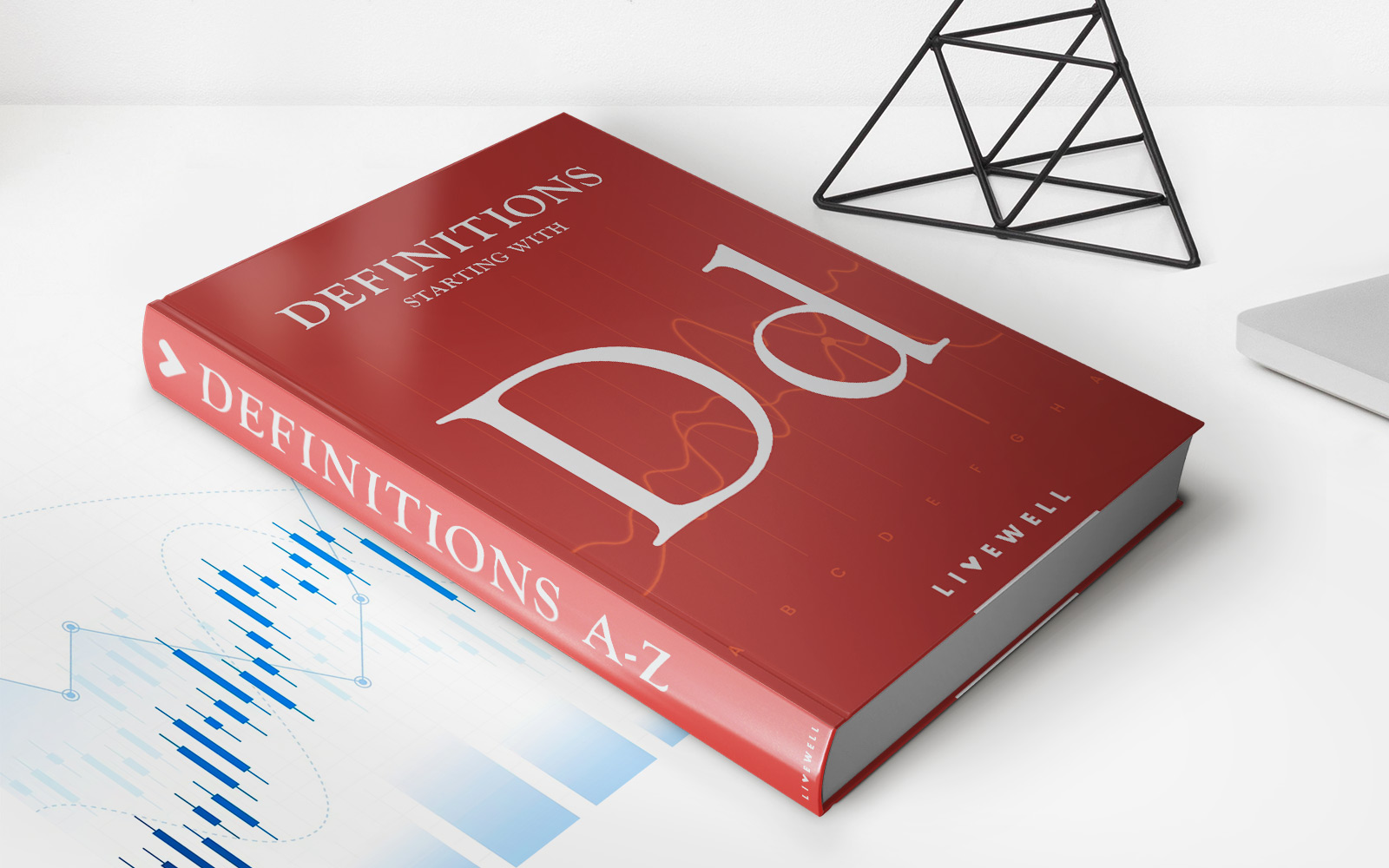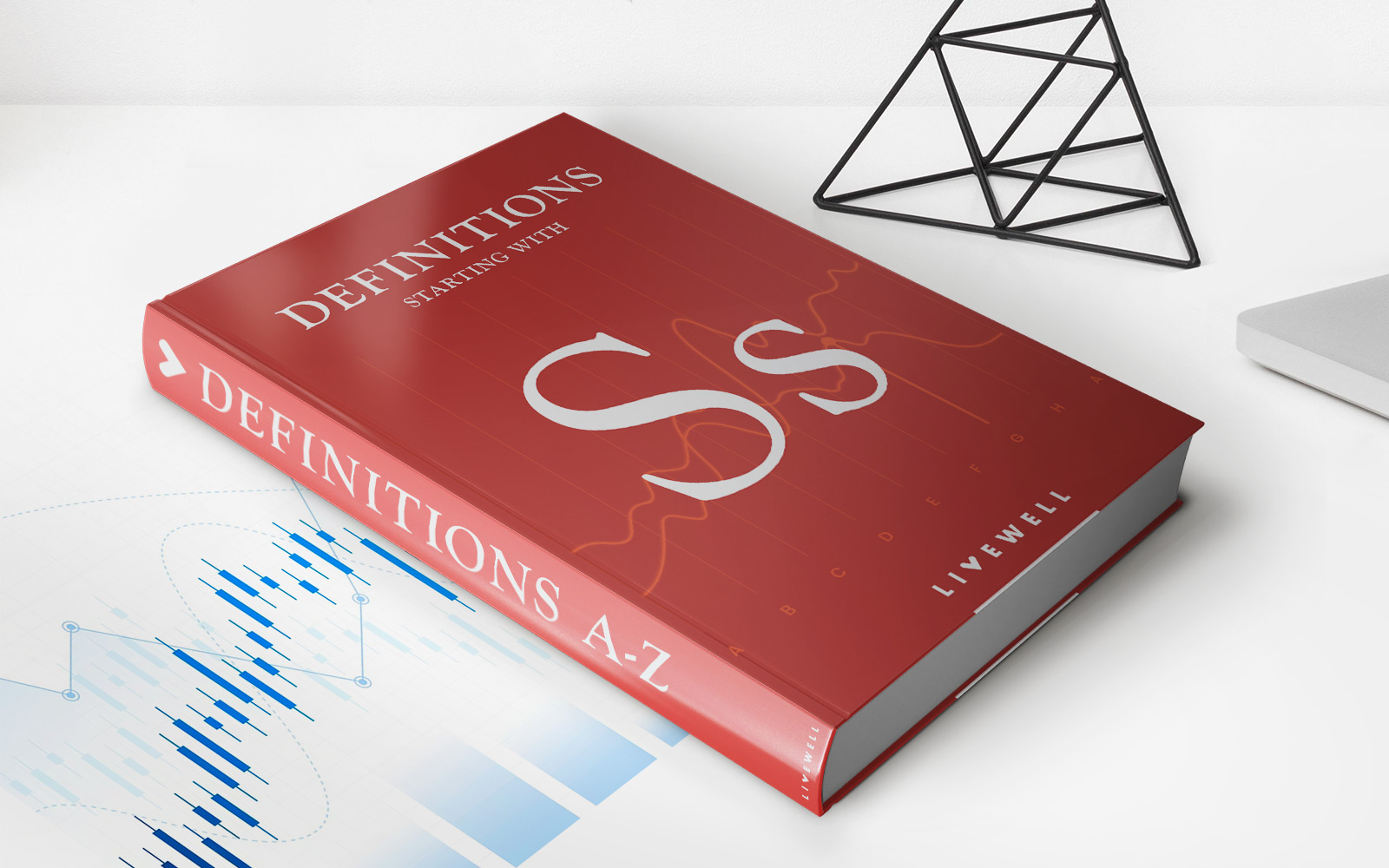

Finance
What Does Tort Mean In Insurance?
Published: November 16, 2023
Understanding the concept of tort in insurance is vital for navigating the complex world of finance. Discover its implications and importance in protecting your assets.
(Many of the links in this article redirect to a specific reviewed product. Your purchase of these products through affiliate links helps to generate commission for LiveWell, at no extra cost. Learn more)
Table of Contents
Introduction
Welcome to the world of insurance! If you’re exploring insurance policies, you may have come across the term “tort” in your research. Understanding what tort means in the context of insurance is essential for ensuring you have the right coverage and protection.
So, what exactly is a tort? In simple terms, a tort refers to a civil wrongdoing or injury caused by one party to another, resulting in legal liability for the party responsible. In the realm of insurance, torts are particularly significant as they can lead to claims against an insured party.
Whether you’re an individual purchasing personal insurance or a business owner seeking commercial coverage, it’s crucial to comprehend the implications of torts in insurance. By understanding the different types of torts, the coverage offered for tort claims, and the potential scenarios that may give rise to a tort claim, you can make informed decisions about your insurance needs.
In this article, we’ll delve into the meaning of torts, explore the various types of torts, discuss the relevance of torts in insurance, and provide real-world examples of tort claims within the insurance industry. By the end, you’ll have a solid understanding of the role of torts in insurance and why it’s essential to be aware of their implications.
Definition of Tort
Before we dive into the specifics of torts in the insurance context, let’s start by understanding the general definition of a tort. A tort can be defined as a civil wrong that causes harm or injury to another person, their property, or their reputation. It is a legal concept that allows individuals who have suffered harm or loss to seek compensation from the party responsible for the wrongdoing.
Torts can arise from a wide range of situations, including accidents, negligence, intentional acts, and even strict liability. The key element of a tort is that it involves a breach of a legal duty owed by one party to another, resulting in harm or damage.
There are several essential elements that must be proven to establish a tort:
- Duty of Care: The accused party must owe a duty of care to the victim. This means they are legally obligated to act in a manner that prevents harm or injury.
- Breach: The accused party must have breached their duty of care by acting in a way that deviated from the expected standard of conduct.
- Causation: There must be a direct link between the breach of duty and the harm or injury suffered by the victim. The breach of duty must be the cause of the harm.
- Harm: The victim must have suffered actual harm or damage as a result of the breach of duty.
It’s important to note that torts can be classified into various categories based on the nature of the wrongful act. Some common types of torts include negligence, intentional torts, strict liability torts, and nuisance.
Now that we have a general understanding of what a tort is, let’s explore the different types of torts in more detail and understand how they relate to insurance.
Types of Torts
There are several types of torts that encompass a wide range of wrongful acts. Understanding the different types of torts is crucial in comprehending the potential risks and liabilities that can arise in insurance claims. Let’s take a closer look at some common types of torts:
- Negligence: Negligence is one of the most common types of torts. It occurs when a person fails to exercise reasonable care, resulting in harm or injury to another individual. To establish a negligence claim, the plaintiff must demonstrate that the defendant had a duty of care, breached that duty, and caused the resulting harm. Negligence claims are widespread in various insurance scenarios, such as car accidents, slips and falls, and medical malpractice.
- Intentional Torts: Intentional torts involve intentional acts that cause harm or injury to another person. Unlike negligence, which focuses on carelessness or lack of caution, intentional torts occur when someone intentionally harms another person or their property. Examples of intentional torts include assault, battery, defamation, and trespassing. These types of torts may lead to personal liability claims or claims against liability insurance policies.
- Strict Liability: Strict liability torts differ from negligence and intentional torts because they do not require proof of fault or intent. Under strict liability, a person or entity can be held liable for any harm or damage caused by their actions, regardless of their intentions or lack of negligence. Examples of strict liability torts include product liability claims, where a manufacturer can be held responsible for injuries caused by a defective product, even if they weren’t negligent in their production.
- Nuisance: Nuisance torts involve interference with the use and enjoyment of another person’s property. This can include activities such as excessive noise, pollution, or obstructions that disrupt the peaceful enjoyment of a property. Nuisance claims can arise in various contexts, including neighbor disputes or environmental pollution cases.
These are just a few examples of the types of torts that exist. Each type of tort carries its own legal elements and requirements for proving liability. Understanding the specific tort involved in an insurance claim is crucial for determining coverage and assessing potential liability.
Tort in Insurance
When it comes to insurance, torts play a significant role in determining coverage and liability. Insurance policies are designed to protect individuals and businesses from financial losses resulting from tort claims. Let’s explore how torts intersect with insurance:
Insurance policies typically have provisions that provide coverage for liability arising from tort claims. These liability coverages protect the insured party against legal claims made by third parties who allege that they have suffered harm or injury due to the insured’s actions. For example, if you are involved in a car accident and are found at fault, your auto insurance policy’s liability coverage would help cover the medical expenses and property damages of the other party involved.
Insurance companies assess and evaluate the risk of potential tort claims when determining premiums for insurance policies. They consider various factors, such as the type of coverage, the insured party’s history of claims, and the overall level of risk associated with the insured’s activities. The more likely an insured party is to face tort claims, the higher their premiums may be.
Furthermore, insurance policies may also provide coverage for legal expenses incurred in defending against tort claims. If an insured party faces a lawsuit related to a covered tort, their insurance policy may offer coverage for legal defense costs, including attorney fees, court costs, and settlements or judgments, up to the policy’s limits.
It’s important to note that insurance policies often have exclusions and limitations related to tort claims. These exclusions may vary based on the type of insurance and the specific policy terms. It’s crucial for policyholders to carefully review their insurance policies, understand the coverage provided for tort claims, and be aware of any exclusions or limitations that may exist.
Additionally, insurance policies may also have provisions that require the insured party to notify the insurance company when a potential tort claim arises. Timely notification is vital to ensure prompt investigation and handling of the claim by the insurance company.
Overall, torts and insurance are closely linked, with insurance policies providing coverage and protection against the financial risks associated with tort claims. Understanding how torts are addressed in insurance policies is crucial for individuals and businesses to ensure they have the appropriate coverage and are adequately protected from potential liabilities.
Coverage for Tort Claims
Insurance policies offer coverage for tort claims through various types of liability insurance. These policies protect individuals and businesses from financial losses arising from legal claims made against them for alleged tortious acts. Here are some common types of coverage for tort claims:
- General Liability Insurance: General liability insurance provides coverage for a wide range of tort claims, including bodily injury, property damage, and personal and advertising injury. This coverage helps protect businesses from potential lawsuits resulting from accidents or injuries that occur on their premises, as well as claims of defamation, copyright infringement, and more.
- Professional Liability Insurance: Professional liability insurance, also known as errors and omissions (E&O) insurance, is crucial for professionals who provide services or advice. It covers claims of negligence, errors, or omissions in their professional duties that result in financial losses or harm to their clients. This coverage is essential for professionals such as doctors, lawyers, consultants, and architects.
- Product Liability Insurance: Product liability insurance protects manufacturers, distributors, and retailers from claims arising from injuries or damages caused by their products. It covers tort claims related to product defects, inadequate warnings, or improper instructions. This coverage is vital in industries where product safety is a concern, such as the automotive, pharmaceutical, and consumer goods sectors.
- Directors and Officers (D&O) Insurance: D&O insurance provides coverage for tort claims against directors and officers of corporations. It protects against claims alleging breach of fiduciary duty, negligence, misrepresentation, or other wrongful acts committed by company executives. This coverage is crucial as directors and officers can be held personally liable for their actions or decisions that result in financial losses for the company or stakeholders.
- Employers’ Liability Insurance: Employers’ liability insurance protects businesses from claims made by employees who have suffered work-related injuries or illnesses. It covers tort claims beyond the scope of workers’ compensation, such as claims alleging negligence or unsafe working conditions. This coverage is vital for businesses to protect themselves from potential lawsuits and provide compensation to injured employees.
Each type of liability insurance policy has its own specific coverages, limits, and exclusions. It’s essential for individuals and businesses to carefully review their insurance policies to understand the extent of coverage for tort claims. It’s also advisable to work with an insurance professional who can help assess the specific risks and recommend appropriate coverage for tort liabilities.
Remember that insurance policies typically have policy limits, which represent the maximum amount the insurance company will pay for a covered tort claim. It’s crucial to ensure that your policy limits are adequate to protect your assets and mitigate financial risks.
By having the appropriate coverage for tort claims, individuals and businesses can have peace of mind knowing that they are financially protected in the event of a legal claim arising from alleged tortious acts.
Examples of Tort Claims in Insurance
Tort claims can arise in various situations, and it’s essential to understand how they can manifest in the insurance realm. Here are a few examples of tort claims commonly encountered in insurance:
- Auto Accidents: Automobile accidents often give rise to tort claims, particularly those related to negligence. If you cause an accident due to your careless or reckless driving, resulting in injuries or property damage to the other party, they may file a tort claim against you. Your auto insurance liability coverage would come into play to provide financial protection in such cases.
- Medical Malpractice: Medical professionals, including doctors, nurses, and hospitals, can face tort claims for medical negligence or errors that result in harm to patients. Medical malpractice insurance is designed to protect healthcare professionals from such claims, providing coverage for legal expenses, settlements, and judgments.
- Premises Liability: Property owners can be held liable for tort claims related to injuries that occur on their premises. Slip and fall accidents, inadequate security leading to assault or theft, or a dog bite incident are examples of tort claims that can be filed by individuals who have suffered harm on someone else’s property. General liability insurance typically covers premises liability claims.
- Product Liability: Manufacturers, distributors, and retailers may face tort claims if their products cause injuries or damages. Defective products, inadequate warnings, or improper manufacture can all give rise to product liability claims. Product liability insurance offers coverage for the legal expenses and potential settlements or judgments resulting from such claims.
- Defamation: Defamation claims fall under the category of intentional torts, involving false statements that harm an individual’s reputation. If someone defames you or your business by spreading false information that damages your reputation, you may file a tort claim for defamation. Depending on the circumstances, defamation may be covered by general liability insurance or specialized media liability insurance.
These are just a few examples of how tort claims can manifest in the insurance realm. It’s essential to recognize that tort claims can vary across different industries and situations. The coverage and handling of each claim will depend on the specific insurance policy terms and circumstances surrounding the alleged tortious acts.
Insurance companies evaluate tort claims, conducting investigations to assess liability and determine the appropriate coverage. They work alongside legal professionals to provide a defense against such claims and, if necessary, negotiate settlements or represent policyholders in court.
Having insurance coverage for tort claims is crucial as it offers financial protection and peace of mind in the face of potential legal liabilities. Understanding the types of tort claims that can arise and ensuring you have the appropriate insurance coverage can help mitigate the financial risks associated with such claims.
Importance of Understanding Tort in Insurance
Gaining a solid understanding of torts and their implications in the insurance realm is vital for individuals and businesses alike. Here’s why understanding tort in insurance is crucial:
- Proper Coverage: Understanding torts enables you to evaluate the potential risks and liabilities you may face in your personal or professional life. By comprehending the different types of torts and their associated claims, you can select appropriate insurance policies that provide the necessary coverage. This ensures that you are adequately protected financially in the event of a tort claim against you or your business.
- Risk Mitigation: Recognizing the potential sources of tort claims and taking proactive measures to minimize risks can help you avoid costly legal battles. By understanding the common scenarios that lead to tort claims, you can implement risk management strategies, such as safety protocols, training programs, or stringent quality control measures. This can help reduce the likelihood of accidents, errors, or negligence, thereby mitigating the risk of facing tort claims.
- Effective Claims Handling: In the unfortunate event that you face a tort claim, knowledge of torts can help you navigate the claims process more effectively. Understanding the elements required to establish a tort claim, as well as the insurance coverage available for such claims, allows you to effectively communicate with your insurance provider and legal counsel. This helps ensure that your rights are protected, and your claim is handled efficiently and fairly.
- Better Policy Management: Being aware of how torts intersect with insurance policies allows you to review and manage your insurance coverage more effectively. By understanding the coverage limits, exclusions, and terms related to tort claims in your policies, you can make informed decisions regarding necessary adjustments or additional coverage. Regularly reviewing your policies with this knowledge in mind ensures that your coverage aligns with your evolving needs.
- Financial Protection: Tort claims can result in substantial financial losses, including legal expenses, settlements, or judgments. Having a clear understanding of torts in insurance helps you ensure that you have adequate coverage to protect your assets and financial well-being. It provides a safety net that can prevent significant financial setbacks and provide peace of mind during challenging times.
Ultimately, understanding tort in insurance empowers you to make informed choices regarding your coverage, mitigate risks, navigate claims more effectively, and protect your financial interests. It allows you to proactively manage potential liabilities and ensure that you are adequately prepared for any tort-related challenges that may arise.
By working with insurance professionals who have expertise in tort claims and coverage, you can receive guidance tailored to your specific needs and circumstances. This helps ensure that you have the necessary protection in place and can effectively safeguard yourself or your business against the potential consequences of tort claims.
Conclusion
Understanding the concept of torts and their implications in the context of insurance is essential for individuals and businesses alike. Tort claims can arise from a wide range of situations, and having proper insurance coverage is crucial to protect against potential financial losses.
By familiarizing yourself with the different types of torts, you gain insight into the potential risks and liabilities you may face. This knowledge allows you to select appropriate insurance policies that provide the necessary coverage to mitigate these risks effectively.
Recognizing the importance of understanding torts in insurance also enables you to implement risk management strategies to minimize the likelihood of accidents, errors, or acts of negligence that could lead to tort claims. By taking proactive measures, you can protect yourself or your business from potential legal battles and costly financial repercussions.
In the event that you face a tort claim, understanding the elements required to establish a tort claim and the insurance coverage available for such claims helps you navigate the claims process more effectively. You can communicate with your insurance provider and legal counsel confidently, ensuring that your rights are protected and your claim is handled efficiently.
Regularly reviewing your insurance policies with a solid understanding of torts allows you to make informed decisions regarding necessary adjustments or additional coverage. This ensures that your insurance coverage keeps pace with your evolving needs, providing the necessary financial protection against potential tort claims.
In conclusion, understanding torts in insurance is crucial for comprehensive risk management, effective claims handling, and adequate financial protection. By staying informed and working with insurance professionals who have expertise in tort claims and coverage, you can navigate the complex landscape of insurance and safeguard your interests in the face of potential tort-related challenges.














